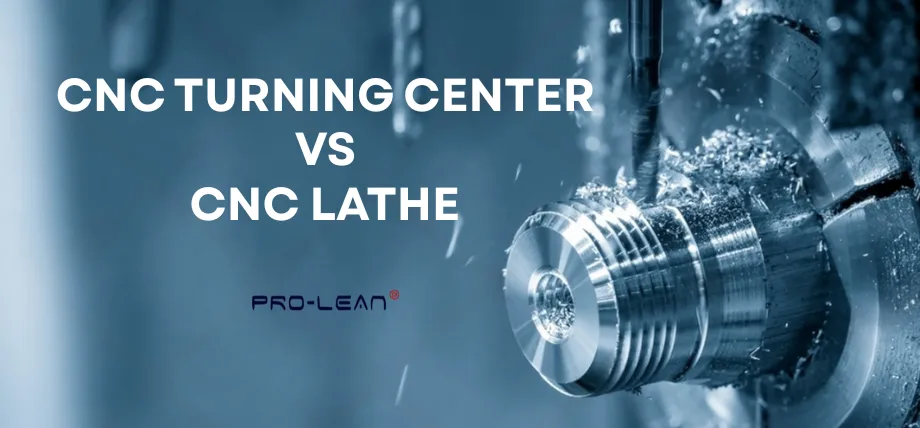
CNC turning center
CNC lathe and CNC turning center are extremely important for modern manufacturing. These machining systems enable the production of cylindrical parts of different sizes with precision and accuracy.
Both CNC lathes and turning center machines utilize computer numerical control (CNC) tech to automate the manufacturing process, with minimal need for human intervention. This automation produces consistent and accurate parts.
The difference between CNC turning centers and CNC lathes is seen in their versatility, axes, and range of operations.
What is the Basic Difference Between a CNC Lathe and a Turning Center?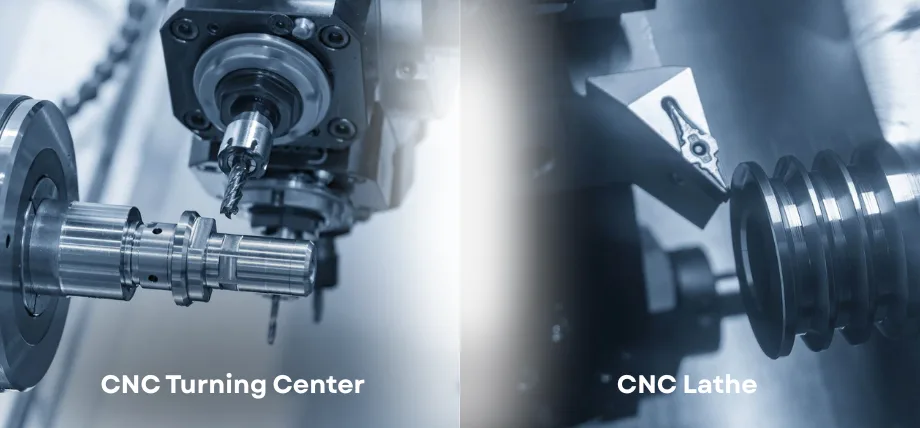
CNC turning center vs CNC lathe machining
How a Traditional CNC Lathe Machine Operates
A CNC lathe machine is a machine tool that removes material from a rotating workpiece. CNC lathe typically forms cylindrical parts and shapes. The lathe has many components, but the most important is the chuck that holds the workpiece in a jaw. The chuck and jaw are mounted in a rotating spindle.
The function of the spindle is to rotate the workpiece at high speeds, and a cutting tool moves along one or more axes to remove material from the workpiece, shaping the material. Most CNC lathes operate on a 2-axis system, with movement in the X and Z (longitudinal) axis.
This movement in 2 axis is ideal for traditional turning operations like facing, thread cutting, taper turning, and knurling. Most lathes have been modernized to have a computer numerically controlled system that can interpret cutting instructions and control the movement of the cutting tool.
CNC lathes donot rely on manual labor and allow less time spent on setup, adjustments, and reorientation of workpiece. However, lathes may have fewer axes, which can limit their cutting ability.
Defining Features of a CNC Turning Center
A CNC turning center is similar to lathe but designed to offer far more versatile machining capabilities. Some of the features of a CNC turning center include:
- Live tooling: CNC turning centers have cutting tools mounted on a turret, which enables various operations like drilling, CNC milling, and tapping while the workpiece is being rotated in the rotating spindle.
- Multi-axis capability: Relies on using 3-axis, 4-axis, and sometimes 5-axis (including C axis) for precise spindle rotation control.
- Automation: Turning centers can monitor part dimensions in real time and perform automatic tool changing to reduce manual labor, enhancing efficiency.
- Versatility: CNC turning centers have the capability to perform a multitude of cutting capabilities, including CNC turning and milling (a few operations), making them suitable for intricate workpieces.
In addition to this, turrets make CNC turning centers far more versatile than lathes. These machining centers, capable of performing intricate and complex tasks. Industries like aerospace and automotive use turning centers.
Key Capabilities that Differentiate Turning Centers from Lathes
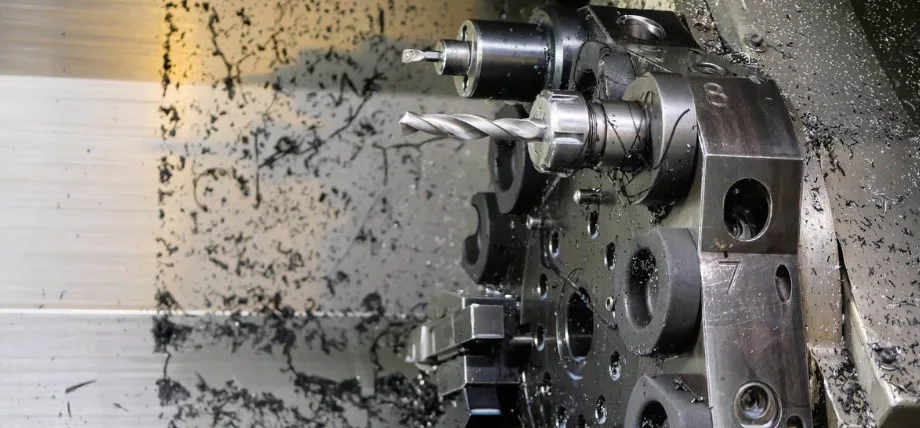
CNC turning center tooling
The difference between a CNC lathe and a turning center can be identified in their axes capabilities. A CNC lathe is ideal for traditional turning operations. But a CNC turning center can perform more versatile tasks like tapping and drilling.
Turning centers also use live tools mounted on a turret. These tools rotate when a different operation is needed, like drilling holes or making slots in the workplace.
The multitude of cutting capabilities makes CNC turning cneters far more versatile than traditional lathes. This is the biggest advantage of CNC turning center when it comes to
Comparison of CNC Lathe and CNC Turning Center
| Feature | CNC Lathe | CNC Turning Center |
|---|---|---|
| Axes | Typically 2-axis (X, Z) | 3-axis, 4-axis, or 5-axis with C-axis |
| Operations | Turning, facing, threading, tapering, knurling | CNC turning, CNC milling, drilling, tapping, reaming |
| Tooling | Fixed cutting tools | Live tooling for powered operations |
| Automation | Basic automation via CNC | Advanced automation with real-time monitoring |
| Versatility | Limited to cylindrical parts | Far more versatile, handles complex geometries |
| Setup Time | Requires multiple manual tool changes | Turret allows quick tool switching, reducing less time |
| Applications | Simple cylindrical parts | Complex parts for aerospace, automotive |
Try Prolean Now!
How Do Axes Capabilities Differ Between CNC Turning Centers and CNC Lathes?
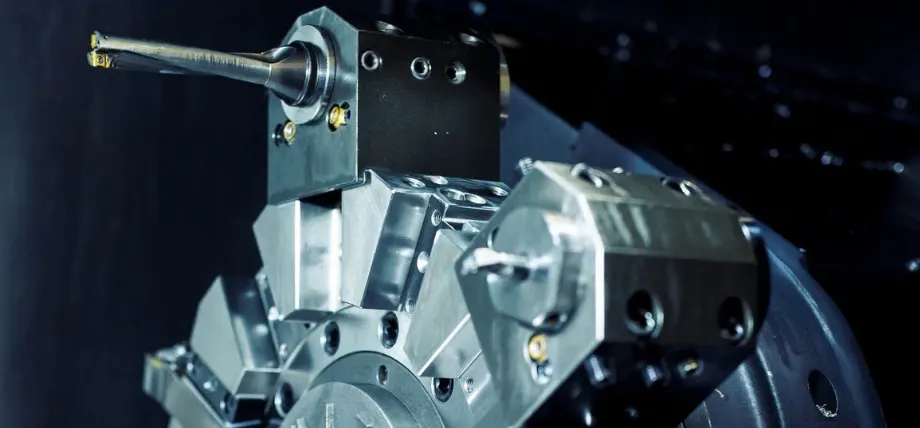
CNC turning center tools
The main difference between CNC turning centers and lathes is the functional number of axes. Standard CNC lathe operates on a 2 axis system. This limits movement to the X and Z directions.
The 2 axis configuration works for cylindrical components. However, it restricts the machine to basic turning operations. On the other hand, CNC turning centers often feature 3-axis, 4-axis, or 5-axis configurations.
These include a C-axis for spindle rotation control and more axes for tool movement. The function of the C axis is to allow precise angular positioning of the spindle for contouring and drilling from specific angles, enabling operations like drilling without repositioning the workpiece.
Vertical CNC turning centers and horizontal CNC turning centers can also feature a Y-axis movement. The extra axes provide an advantage when it comes to producing intricate parts in less time with CNC turning.
What Machining Operations Can Be Performed on Turning Centers vs. Standard Lathes?
Traditional Turning Operations Available on Both Machines
Traditional turning operations can be performed on both CNC lathes and CNC turning centers, like shaping the outer diameter of a cylindrical workpiece and facing, which creates a flat surface on the end of a workpiece.
Threading involves cutting threads for fasteners like screws ot bolts and tapering creates a taper by slowly reducing the diameter. Another operation, knurling, adds a textured pattern to the surface for improved grip.
These operations can be performed on both machines because they hold the workpiece in a rotating spindle, and only the tool changes to produce different cuts.
Advanced Milling and Drilling Capabilities of CNC Turning Centers
Unlike traditional lathes, CNC turning centers can perform advanced operations due to their live tooling and multi-axis capability.
- Drilling creates precise drill holes using powered tools.
- Tapping cuts internal threads with a tap.
- Reaming enlarges and smooths existing holes for precision fits.
These capabilities allow CNC turning centers to produce complex cylindrical parts. They reduce the need to change to another machining center, making the manufacturing process more efficient.
Live Tooling Options and Their Advantages in Turning Centers
Live tooling is available in CNC turning centers. These powered tools mounted on the turret are able to rotate independently. This allows for turning operations and operations like drilling, tapping, and milling, while the workpiece is in the rotating spindle.
Types of CNC Turning Centers
CNC turning centers are categorized based on their configuration and capabilities.
- Horizontal CNC turning centers: for large workpieces
- Vertical CNC turning centers: for heavy or large-diameter parts
- Mulit-axis turning centers: up to 5-axis machines capable of performing CNC turning and milling.
Why Use a CNC Turning Center Over a Lathe?
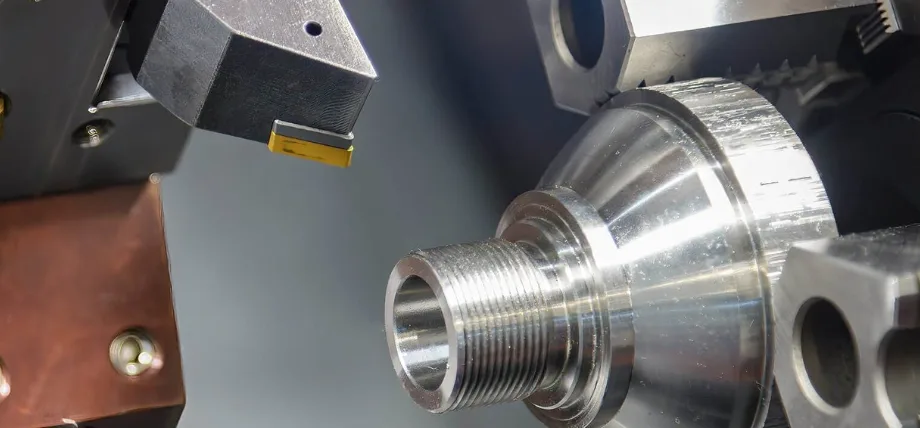
CNC Lathe
CNC turning centers offer many advantages over CNC lathe operations, particularly for large-piece manufacturing. These machines provide versatility, performing CNC turning and milling, which reduces the need for a separate lathe and a mill. Live tools and extra axes enable machining requiring multiple operations on a single part.
CNC turning center can handle intricate workpieces, surpassing manual lathes and basic CNC lathes. CNC turning centers are perfect for businesses and manufacturers looking for machine tools that rotate and offer a multitude of cutting capabilities.
- Advanced Features: Modern CNC turning centers include features like bar feeders, part catchers, and automatic dimension checkers.
- Quality Control: CNC systems ensure consistent part quality across long production runs
- Higher Production Efficiency: Turning centers are ideal for high-volume production with reduced setup and cycle times.
Try Prolean Now!
Tight Tolerance CNC Turning Services
Get precision, perfect parts from CNC turning centers or automatic lathes–Request a quote for today!
Partner with Prolean-Tech for high-quality CNC turned parts.
Conclusion
The difference between CNC turning centers and lathes lies in their axes capabilities, part size versatility, and many types of cylindrical machining operations. CNC lathes are well-suited for traditional turning operations on cylindrical parts. On the other hand, CNC turning center offers much more advanced features like live tooling, milling, drilling, and tapping capabilities for precision turning.
These capabilities make CNC turning centers far more versatile for complex parts in significantly less time.

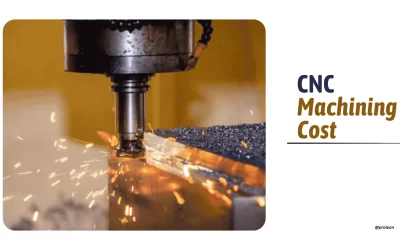
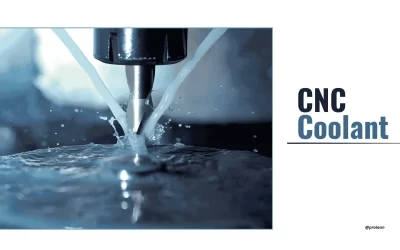
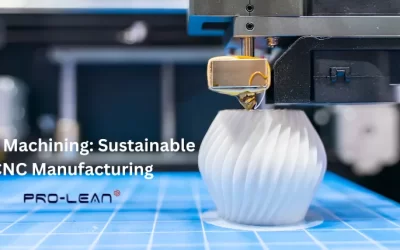
0 Comments